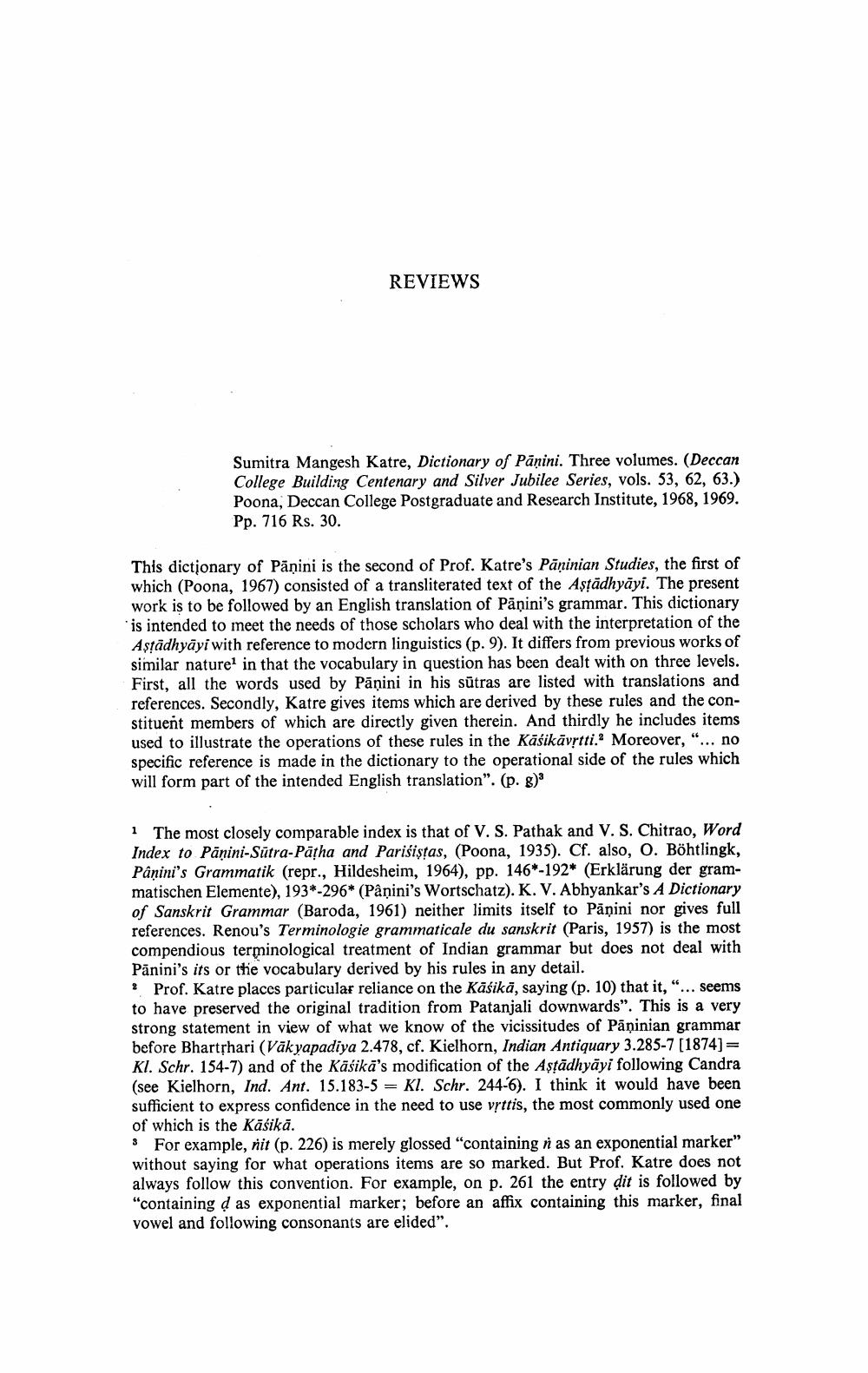________________ REVIEWS Sumitra Mangesh Katre, Dictionary of Panini. Three volumes. (Deccan College Building Centenary and Silver Jubilee Series, vols. 53, 62, 63.) Poona, Deccan College Postgraduate and Research Institute, 1968, 1969. Pp. 716 Rs. 30. This dictionary of Panini is the second of Prof. Katre's Paninian Studies, the first of which (Poona, 1967) consisted of a transliterated text of the Astadhyayi. The present work is to be followed by an English translation of Panini's grammar. This dictionary is intended to meet the needs of those scholars who deal with the interpretation of the Astadhyayi with reference to modern linguistics (p. 9). It differs from previous works of similar naturel in that the vocabulary in question has been dealt with on three levels. First, all the words used by Panini in his sutras are listed with translations and references. Secondly, Katre gives items which are derived by these rules and the constituent members of which are directly given therein. And thirdly he includes items used to illustrate the operations of these rules in the Kasikavstti. Moreover, "... no specific reference is made in the dictionary to the operational side of the rules which will form part of the intended English translation". (p. g) 1 The most closely comparable index is that of V. S. Pathak and V.S. Chitrao, Word Index to Panini-Sutra-Patha and Parisistas, (Poona, 1935). Cf. also, O. Bohtlingk, Panini's Grammatik (repr., Hildesheim, 1964), pp. 146*-192* (Erklarung der grammatischen Elemente), 193*-296* (Panini's Wortschatz). K. V. Abhyankar's A Dictionary of Sanskrit Grammar (Baroda, 1961) neither limits itself to Panini nor gives full references. Renou's Terminologie grammaticale du sanskrit (Paris, 1957) is the most compendious terminological treatment of Indian grammar but does not deal with Panini's its or the vocabulary derived by his rules in any detail. ? Prof. Katre places particular reliance on the Kasika, saying (p. 10) that it, "... seems to have preserved the original tradition from Patanjali downwards". This is a very strong statement in view of what we know of the vicissitudes of Paninian grammar before Bhartshari (Vak yapadiya 2.478, cf. Kielhorn, Indian Antiquary 3.285-7 [1874]= KI. Schr. 154-7) and of the Kasika's modification of the Astadhyayi following Candra (see Kielhorn, Ind. Ant. 15.183-5 = Kl. Schr. 244-6). I think it would have been sufficient to express confidence in the need to use vyttis, the most commonly used one of which is the Kasika. 3 For example, nit (p. 226) is merely glossed "containing n as an exponential marker" without saying for what operations items are so marked. But Prof. Katre does not always follow this convention. For example, on p. 261 the entry dit is followed by "containing d as exponential marker; before an affix containing this marker, final vowel and following consonants are elided".




